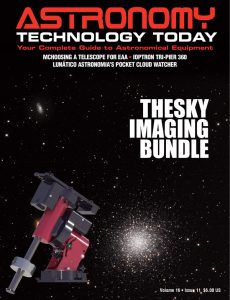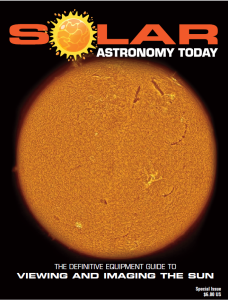The new Levenhuk Atom Digital Night Vision Monocular models offer an NVD with a digital converter that can eliminate glare and are designed for both night and day use. The Monoculars are offered in two versions, the DNM100 and DNM50. They can be mounted on tripods with a standard 1/4″ thread.

During the day, the observation distance of the Levenhuk Atom Digital Night Vision Monocular is unlimited, and, at night, you can explore the surroundings within 200m (650ft) and offers a built-in recorder for photo and video recording. The data is stored on a memory card of up to 128GB, which can hold many photos and videos.
Atom Digital DNM100 Monocular
One of the design advantages of the Levenhuk Atom Digital DNM100 model is a convex lens, which enlarges the image on the built-in display. It offers 4x optical magnification and a 1–8x digital zoom. The DNM100 offers an objective lens that is larger than in the Levenhuk Atom Digital DNM50 monocular and the Levenhuk Atom Digital DNB100 binoculars. Its diameter is 35mm and, therefore, the optics can collect more light.
A USB port is located next to the card slot. The maximum photo resolution can reach 4096×2160 pix, and videos are recorded in Full HD. The monocular is powered by a replaceable rechargeable battery, and the operation time on a single charge lasts up to 5 hours (with IR illumination off).
Atom Digital DNM50 Monocular
The DNM50 Night Vision Monocular is a compact digital NVD offering 4x optical magnification and a 1–5x digital zoom. The built-in video recorder provides a wide range of photo and video recording options in different resolutions: up to 10M for photos and up to 1920×1080 pix at 30fps for videos.

The focusing wheel is located on the objective lens, and the illumination control buttons are right under your fingers on the top panel. The small and lightweight monocular is easy to take with you, so you can quickly start observing wherever you are. The device is powered by standard batteries. The auto-off function of the display and the device saves energy power.
The Levenhuk Atom Digital Night Vision Monocular model specifications include:
– Package size (LxWxH in cm): DNM100 – 22.5×11.5×9: DNM50 – 16.5×8.5×7.5
– Shipping Weight: DNM100 – 0.52 kg; DNM50 – 0.28
– X Magnification: DNM100 1–8 (digital), 4 (optical); DNM50 1–5 (digital), 4 (optical)
– Objective lens diameter (aperture): DNM100 – 35mm; DNM50 – 28
– Angular field of view: DNM100 – 10.4; DNM50 – 10
– Close focus: DNM100 – 10m; DNM50 – 5m
– Detection range: 200m
– Image intensifier: Digital
– CCD, CCIR matrix: CMOS color
– Display resolution: 320×240 pixels
– Display: 1.54″
– Built-in recorder: Yes
– Video format: AVI
– Video resolution (pixels): DNM100 – 1920×1080 (Full HD); DNM50 – 1280×720 at 30fps, 1920×1080 (Full HD) at 30fps
– Image (pixel): DNM100 – up to 4096×2160; DNM50 – 10 (3648×2736), 3 (2048×1536), 5 (2992×1696), 8 (3264×2448), VGA (640×480)
– Memory: MicroSD up to 128GB, Сlass 10
– IR illuminator: Yes
– Wavelength: 850 nm
– Power supply: DNM100 – rechargeable battery; DNM50 – 5 AA batteries
– Optics material: Optical glass
– Body: High-strength ABS plastic
– Operating temperature range: -20°C to +60°C
– Mount: Standard 1/4″ tripod thread
– USB port: DNM100 – Yes
– Auto-off function of the display: Yes
You can learn more about the Levenhuk Atom Digital Night Vision Monoculars here.

 And to make it easier for you to get the most extensive news, articles and reviews that are only available in the magazine pages of Astronomy Technology Today, we are offering a 1-year magazine subscription for only $6! Or, for an even better deal, we are offering 2 years for only $9. Click here to get these deals which only will be available for a very limited time. You can also check out a free sample issue here.
And to make it easier for you to get the most extensive news, articles and reviews that are only available in the magazine pages of Astronomy Technology Today, we are offering a 1-year magazine subscription for only $6! Or, for an even better deal, we are offering 2 years for only $9. Click here to get these deals which only will be available for a very limited time. You can also check out a free sample issue here.
The sun is more active than it has been in years! If you’d like to learn more the technology behind solar observing, solar imaging and more, you can check out our free publication, “The Definitive Guide to Viewing and Imaging the Sun”. You don’t have to sign up or provide any information, simply click here and enjoy reading!



